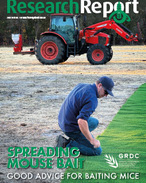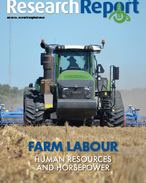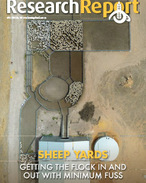This article is 5 years old. Images might not display.
Agriculture Victoria Land Management extension officer, Neil James, said the plants that are most susceptible are seedlings, newly-sown pastures and brassicas which can be severely damaged by these pests.
In older pastures, damage is visible as whitening or silvering of the leaf surface, reducing production and seed set for next year. Mites can also severely damage legumes and attack grasses and cereal crop species.
Adult mites are about 1mm long and 0.6mm wide. Younger mites are smaller with a black velvety body and eight red legs.
Earthmites first hatch following a combination of cool temperatures (less than 20°C) and adequate soil moisture (more than 10mm rainfall) in the autumn, then from eggs laid over summer.
Eggs laid by subsequent generations hatch within about a week of laying and there can be up to four generations of mites during the year.
Red-legged earth mites feed throughout the growing season and can be seen moving on the ground, or on the stalks and leaves of the plant. They are best seen while on hands and knees with a magnifying glass. A gentle rub of the ground may be necessary to get them moving.
In mid to late spring, the female mites produce summer eggs which survive in the dried bodies of the females ready to hatch the following autumn.
Registered insecticides are available for immediate control of red-legged earth mite. Consult an agronomist or advisor for treatment advice.
A long-term control strategy is to use the Australian Wool Innovation (AWI) TIMERITE system developed by the CSIRO. TIMERITE provides the optimum spray date in spring for a property.
This date is unique for each location and remains constant from year to year. Using the TIMERITE spray date will remove females before they produce their eggs, significantly reducing the number of mites hatching the following autumn.
A date for the ideal spraying time can be discovered by logging on to: www.wool.com/land/timerite/calculatedate/ or by phoning the AWI Helpline on 1800 070 099.






















